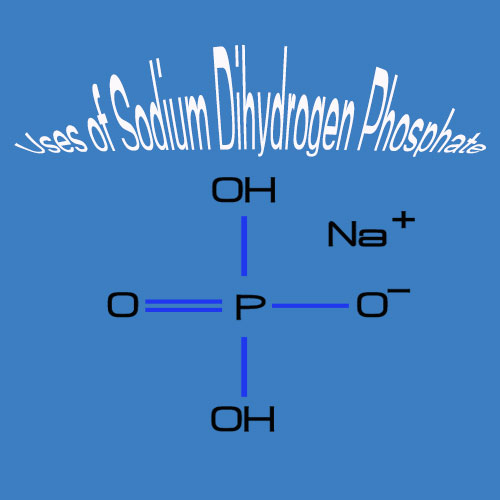
I.Chemical Properties
Sodium dihydrogen phosphate, with the chemical formula NaH2PO4, is an inorganic compound.
A.Acidity
Sodium dihydrogen phosphate is acidic when dissolved in water. The pH of its aqueous solution is typically around 4.5(click to read “sodium dihydrogen phosphate acid or base” for details). This acidity is due to the dissociation of the compound in water, releasing hydrogen ions. When it reacts with bases, it forms phosphates and water. For example, when it reacts with sodium hydroxide, it forms sodium phosphate and water. This reaction characteristic is an important aspect of its chemical behavior and is useful in various applications.
B.Other Chemical Characteristics
Sodium dihydrogen phosphate is hygroscopic, meaning it has a tendency to absorb moisture from the air. This property can affect its storage and handling. At certain temperatures, it can generate different compounds. For instance, when heated to 225 – 250°C, it forms acidic sodium pyrophosphate, and at 350 – 400°C, it forms sodium metaphosphate. These transformations show its reactivity and potential for use in chemical synthesis. Additionally, its ability to form different compounds at specific temperatures makes it a valuable compound in various industrial processes.
II.Applications in Various Fields
A.Food Industry

Sodium dihydrogen phosphate plays multiple important roles in the food industry.
As a flavor enhancer, it can improve the taste of food products and enhance their acidity, which not only enriches the flavor but also helps prolong the shelf life. As a thickener, it increases the saturation of food, making it more delicious.
- In milk powder, it acts as an acidity regulator, adjusting the pH of the milk powder to make it easier to dissolve and digest. In countries like Japan, it is used in brewing and dairy products as an acidity regulator.
- In meat products, it serves as a binder and stabilizer. However, its use in food is strictly regulated by relevant laws and standards, such as “Food Additive Sodium Dihydrogen Phosphate (GB 25564-2010)”. Care must be taken to control the addition amount to avoid potential risks caused by excessive use.
Related article: How to use sodium dihydrogen phosphate in food.
B.Medical Field
In the medical field, sodium dihydrogen phosphate has several important applications. It is used for the prevention and treatment of hypophosphatemia. As an additive in total parenteral nutrition therapy, it helps prevent hypophosphatemia. It is also an auxiliary drug for urinary tract infections, as it can acidify urine and enhance the antibacterial activity of certain drugs. Additionally, it is used in the prevention of calcium-containing kidney stones by increasing the solubility of calcium in urine to prevent calcium deposition. In the manufacturing of medical products, it can be used as a raw material for antibiotics, heparinase catalysts, and antipsychotic drugs.

C.Industrial Applications
Sodium dihydrogen phosphate is widely used in industrial applications. It can be used as a raw material for preparing various phosphates such as sodium pyrophosphate, sodium hexametaphosphate, and sodium dihydrogen pyrophosphate. As a boiler water treatment agent, it is used in high-pressure boiler systems to control the pH of the boiler water and prevent scale formation. In the dyeing industry, it acts as a regulator in low-formaldehyde wrinkle-free finishing processes. In metal corrosion prevention, it is used as an additive in environmentally friendly chromium-free passivation solutions for treating aluminum profiles to improve the corrosion resistance of the metal.
D.Agricultural Use
In agriculture, sodium dihydrogen phosphate is used as a phosphorus fertilizer to provide essential phosphorus for plants. Due to its weakly acidic nature, it is beneficial for plants that grow in neutral or slightly acidic soil, such as rubber trees. It helps these plants grow better by providing the necessary nutrients and maintaining an appropriate soil pH.

E.Other Applications
Sodium dihydrogen phosphate has various other applications. In cosmetics and skincare products, it is used as a pH regulator and buffer. In chemical reactions, it can act as a catalyst for acetal (ketone) synthesis and nitration reactions. In cement mortar, adding sodium dihydrogen phosphate can effectively delay the setting of cement and extend the service time of mortar. For pharmaceuticals, it can be used for surface coating of tablets or granules to improve the light and heat resistance of the coating.


